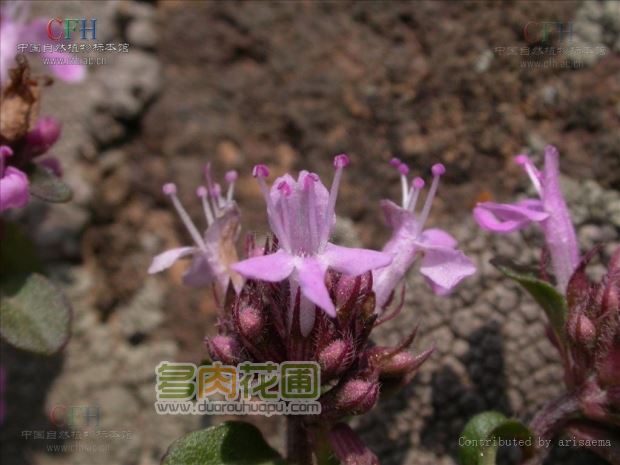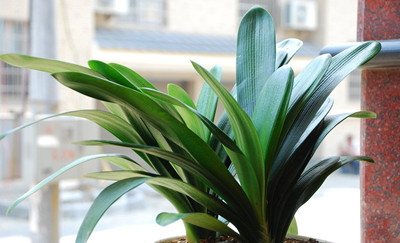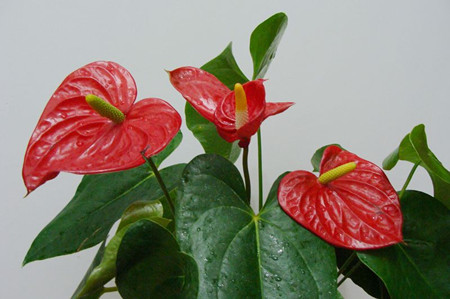Culture methods and matters needing attention of thyme
In China, thyme is known as ground pepper, ground pepper, mountain pepper, mountain pepper, thyme and so on. Thyme is semi-irrigated, with fragrant stems and leaves. Often used as flower mirrors, flower beds, rock gardens, spice gardens or sunny ground cover plants. It is very suitable for edible seasoning and has high medical value.
The cultivation environment of thyme should have plenty of light, otherwise the plant will grow in vain. The requirement of soil quality is not high, but it needs good drainage. Peat moss or cultivated soil mixed with perlite can be used. The most suitable temperature for growth is 20 degrees Celsius to 25 degrees Celsius. Special attention should be paid to the high temperature in summer. When the temperature is high, the plants can be trimmed slightly to facilitate ventilation and be placed in a cool place for summer.
Organic fertilizer can be used as base fertilizer for fertilization. when the growth is exuberant in spring and autumn, Huabao is diluted 1000 times and irrigated once every 7-10 days. The plant is weak in summer, so it is best not to apply fertilizer. The branches and leaves can be cut and used at any time before flowering, otherwise the plant is easy to die after flowering and seeding. If it is harvested in large quantities, it can also be dried and preserved.
Thyme can be propagated by sowing, cutting, striping and splitting, and it is very suitable for reproduction except in summer. If you breed with seeds, because the seeds are very small, it is better to sow them, you can first fully wet the medium and spread the seeds evenly on top. When this leaf grows 4-6 leaves, it can be moved to a smaller container (such as hole planting plate), and then moved to a 3-inch basin when the root system of the plant is well developed. when planting, 5-10% organic patch can be added to the culture soil. Cuttings can take the terminal bud as cuttings, with 3-5 nodes is better, but be careful not to take the textured branches, the root energy is poor.

1. Morphological characteristics.
Semi-shrub. Stems numerous, prostrate or ascending; sterile branches arising from end or base of stem, creeping or ascending, pubescent; flower branches tall (1.5) 2-10 cm, densely recurved or slightly spreading under inflorescence, proximal hairs shorter and sparse, with 2-4 leaf pairs, base with deciduous first leaves. Leaves ovoid, 4-10 mm long and 2-4.5 mm wide, apex obtuse or slightly acute, base cuneate or attenuate, entire or rare 1-2 pairs of small serrations, both surfaces glabrous, lateral veins 2-3 pairs, raised below, glandular spots somewhat obvious, petiole conspicuous, petiole ca. 1 blade 2 in distal part, shorter in upper part; bracts homomorphic to leaf, margin 1-ciliate in lower part.
Inflorescences capitate, many or few flowered, flowers shortly pedicellate. Calyx tubular-campanulate or narrowly campanulate, 4-4.5 mm long, lower sparsely pilose, upper subglabrous, lower lip longer than upper lip or nearly equal to upper lip, upper lip teeth short, teeth not exceeding upper lip full length 1 × 3, triangular, ciliate or glabrous. Corolla purplish red, purple or lilac, pink, 6.5-8 mm long, sparsely pubescent, crown tube elongated, 4-5 mm long, slightly enlarged upward.
Nutlets suborbicular or ovoid, compressed, smooth. The florescence is from July to August.
2. Geographical distribution
Produced in Gansu, Shaanxi, Qinghai, Shanxi, Hebei, Inner Mongolia; born in stony mountains, slopes, valleys, gullies, roadsides and weeds, 1100-3600 m above sea level. Isotype specimens were collected from Taohe Basin in Gansu Province and Qinghai Province.
3. Growth habits
Like warm, light and dry environment, do not have high requirements for soil, but grow well in calcareous soil with good drainage. Loose and well-drained land, facing the sun.
4. Cultivation techniques
The cultivation environment should have plenty of light, otherwise the plant will grow in vain. The requirement of soil quality is not high, but it needs good drainage. Peat moss or cultivated soil mixed with perlite can be used. The most suitable growth temperature is 20-25 ℃. In Taiwan, we should pay attention to the high temperature in summer. The plants can be trimmed slightly for ventilation and placed in a cool place for summer.
Fertilization can be organic when the base fertilizer, spring and autumn growth is exuberant, then Huabao diluted 1000 times, every 7-10 days watering, summer plants are weak, it is best not to apply fertilizer. The branches and leaves can be cut and used at any time before flowering, otherwise the plant is easy to die after flowering and seeding. If it is harvested in large quantities, it can also be dried and preserved.
Seedlings can be propagated by seeds and individual plants.
① seed propagation method
Sowing and raising seedlings from March to April in spring. As the thyme seeds are small, the seedling ground must be carefully prepared, and the soil must be fine and flat, then slightly suppressed, watered and sowed, then covered with a thin layer of fine soil and covered with plastic film to keep warm and wet. After 10-12 days of emergence, the temperature uncovered the film in time. Attention should be paid to keeping the soil moist and weeding at the seedling stage. When the seedling height is 10-15 cm, it can be planted in the field directly according to the row and plant spacing (30-45) cm × (25-30) cm, and then watered after planting.
② ramet breeding method
Select more than 3-year-old plants, dig out the mother plants with roots in late March or early April, and then divide them into 4-6 parts according to the size of the clumps. Each clump should have 4-5 buds, which can be planted. In addition, there is clustering breeding. During the growth period, the stolon was cut off and then transplanted.
The field management should be watered immediately after planting, and attention should be paid to keeping the soil moist until the seedlings are slow. The growing period can be watered once a month, and the soil should be ploughed and loosened in time, and drainage should be paid attention to in the rainy season. Combined with watering, urea can be applied twice according to the growth situation, with a dosage of about 5 kg per mu each time. After pouring over-winter water before winter, cultivate mature dry manure and cultivate soil to facilitate overwintering.
5. Main value
Medicinal value to improve digestive system and gynecological diseases, promote blood circulation, enhance immunity, reduce neuropathic pain, antibacterial. Help wound healing, treatment of eczema and blister skin. Activate brain cells, improve memory and attention, fight depression and soothe the soul. It is very effective for dandruff and suppressing hair loss. Antibacterial, anti-spasmodic, anti-insect venom, sterilization, strengthen the body, promote scarring. Strengthen neurological prevention and have nightmares.
Leaves can be combined with all kinds of meat and shellfish dishes, making tea can help digestion, eliminate flatulence and relieve alcohol, and adding honey in the extract can cure spastic cough, cold and sore throat. Soaking bath also has a soothing and calming effect, refined essential oil has bactericidal effect, and can be made with freckles cream, which can eliminate freckles, repair aging skin, and can also be used to make soap and mouthwash.
Although the appearance of thyme is not very outstanding, it has a wide range of uses. Thyme has the effects of helping digestion, relieving alcoholism, antisepsis and diuresis. It is generally used in cooking fresh or dry branches and leaves, or soaked in herbal tea. Thyme tea can also relieve headaches caused by hangovers, but the total consumption of this kind of spice plants should not exceed 10 grams a day, so as not to be too irritating to the human body. In addition, adding some branches and leaves to the water when taking a bath has a refreshing effect. If you don't like spice plants that are too strong, it is recommended that you choose thyme with a softer smell.
Edible value thyme is the whole grass of thyme, a plant of Labiatae. Thyme stem creeping, rooting everywhere, much branched, the lower part of Lignification, reddish brown, flower branches straight up, 3-15 cm high, with a strong aromatic smell. Leaves opposite; slender, long elliptic or ovate, up to 15 mm long and 7 mm wide, entire, obtuse, base setose, shortly stipitate. Flowers small, purplish red, clustered branch ends, forming verticillate spikes: Calyx green, calyx tube campanulate, apex 5-lobed, throat hairy; Corolla lip-shaped, lower lip 3-lobed; stamens 4, strong; pistil 1. Nutlets oval, located at the bottom of the persistent calyx. The florescence is from June to July. Grows on dry hillside sand. It is distributed in Inner Mongolia, Gansu, Shaanxi, Northeast and other places. Whenever spring and summer, pieces of thyme green blankets, pink florets smell to the nostrils, with the wind emitting bursts of fragrance, harvested from June to July, dry or fresh.
Nutrition analysis: the whole grass contains volatile oil, and the content is the highest when the flower is full bloom. Its main components are thymol (Thymol), cassavol (Carvacrol), linalool (Linalool) and p-cymene (p-Cymol) and other compounds. It has antitussive, anti-inflammatory, antiseptic effects and so on. Thyme contains flavonoids such as baicalein, glucoside, luteolin-7-glucoside, apigenin and volatile oil, which is highly irritating and can cause liver degeneration.
Nutrient content
Nutrients
Content
Nutrients
Content
Carbohydrates (g)
0.20
Phosphorus (mg)
42.00
Manganese (mg)
0.94
Calcium (mg)
218.00
Copper (mg)
1.08
Magnesium (mg)
104.00
Vitamin E (mg)
0.11
Zinc (mg)
0.72
Iron (mg)
27.90
Potassium (mg)
470.00
Carotene (microgram)
3510.00
Vitamin A (micrograms)
585.00
Sodium (mg)
36.40
Cellulose (g)
0.20
Vitamin C (mg)
0.00
Therapeutic effect of diet
Thyme has pungent taste and warm nature; it has the effect of warming the middle and dispelling cold, dispelling wind and relieving pain.
Main treatment of vomiting, abdominal pain, diarrhea, less distension, cold cough, swollen pharynx, toothache, body pain, skin itching.
Ornamental value was recorded in the agricultural poems of Roman poets 2000 years ago, that is, the use of thyme as spice. In ancient Greece, when sacrificing warriors, thyme was lit on the altar, so in Greek, thyme symbolizes nobility and bravery. Thyme has long been famous for its fragrant herbs. Roman cheese and wine were used as seasoning and used as spice in soups and cans. The essential oil extracted from thyme has obvious disinfection and germicidal effect. it can treat chest infection and stomachache and diarrhea caused by cold, and has the effects of anti-spasm, antitussive and trauma. It can also be used as a flower bed plant arrangement.
Thyme Picture Culture methods and points for attention of Thyme
Thyme is a kind of ornamental plant with strong aroma. It can beautify the environment, refresh the mind, and purify essential oil for people to use. However, many people in life are not familiar with thyme and do not know what it looks like. In a moment, I will sort out its pictures and share them with you. At the same time, I will also show you how to cultivate thyme and what things we should pay attention to.
Culture method
1. The environment for breeding thyme.
Thyme, a plant that likes a warm environment, should be placed in a mild environment of 20 to 25 degrees. It cannot be raised in a hot and humid environment. Indoor ventilation should be increased in summer when the weather is hot, and water should be sprayed on the leaves of thyme in time to cool down. In addition, thyme needs plenty of sunshine in the production process, usually we should put it in the sunny balcony or sunny room, if the sun is not enough, it will make the plant grow in vain.
2. Fertilizer and water management of thyme
The fertilizer and water management of this plant is particularly important. The leaves of this plant are slightly fleshy, drought tolerance is relatively strong, waterlogging tolerance is particularly poor, usually water supply can not be too much, watering once a week can and can not make the pot soil too wet, or stagnant water appears in the flowerpot, otherwise its roots will rot. Thyme, this plant has relatively low requirements for fertilizer, it grows slowly, usually does not need regular fertilization, only needs to be fertilized every half a month when thyme grows vigorously in spring.
Matters needing attention
Usually raise thyme, we must pay attention to rest and recuperation, it is necessary to pick the heart during the seedling period, so as to promote branching and shaping, and usually prune it at any time according to its growth, so as to maintain the beauty of the plant. at the same time, it is also conducive to its ventilation and healthy growth. In addition, the plant of thyme should be changed every two years, and the soil should choose neutral or alkaline soil with good drainage.
- Prev

The causes and Countermeasures of Arrow entrapment in Gentleman
The gentleman orchid clip arrow means that the scape cannot come out in the crack of the leaf. The main reasons for the entrapment of arrows are as follows: the temperature is uncomfortable-the suitable temperature for the growth of nbsp; is 15-25 degrees Celsius, and when it is lower than 15 degrees Celsius, the growth is poor. Especially before going out, if it is less than 15 degrees Celsius, the scape will be difficult to pull out.
- Next

Culture method of Anthurium andraeanum (Flaming Crane)
The flaming crane is called candle, anthurium, andrographis angustifolia. The flowers are drawn from the leaves like flaming cranes. The flower has a waxy texture, a long flowering period, and can blossom year-round under suitable conditions. It is a new species of cut and potted flowers in the world.
Related
- Fuxing push coffee new agricultural production and marketing class: lack of small-scale processing plants
- Jujube rice field leisure farm deep ploughing Yilan for five years to create a space for organic food and play
- Nongyu Farm-A trial of organic papaya for brave women with advanced technology
- Four points for attention in the prevention and control of diseases and insect pests of edible fungi
- How to add nutrient solution to Edible Fungi
- Is there any good way to control edible fungus mites?
- Open Inoculation Technology of Edible Fungi
- Is there any clever way to use fertilizer for edible fungus in winter?
- What agents are used to kill the pathogens of edible fungi in the mushroom shed?
- Rapid drying of Edible Fungi

